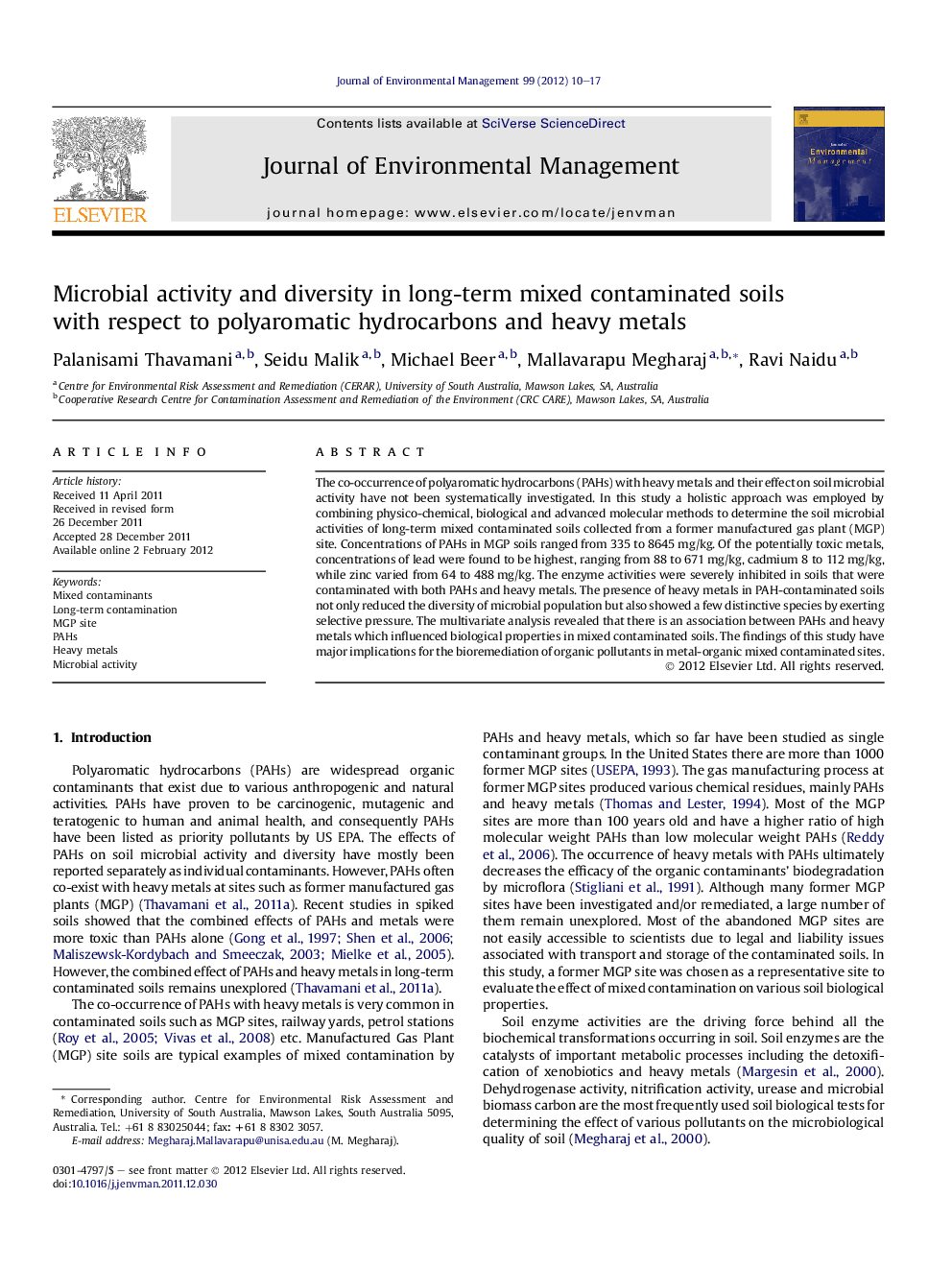| Article ID | Journal | Published Year | Pages | File Type |
|---|---|---|---|---|
| 1056899 | Journal of Environmental Management | 2012 | 8 Pages |
The co-occurrence of polyaromatic hydrocarbons (PAHs) with heavy metals and their effect on soil microbial activity have not been systematically investigated. In this study a holistic approach was employed by combining physico-chemical, biological and advanced molecular methods to determine the soil microbial activities of long-term mixed contaminated soils collected from a former manufactured gas plant (MGP) site. Concentrations of PAHs in MGP soils ranged from 335 to 8645 mg/kg. Of the potentially toxic metals, concentrations of lead were found to be highest, ranging from 88 to 671 mg/kg, cadmium 8 to 112 mg/kg, while zinc varied from 64 to 488 mg/kg. The enzyme activities were severely inhibited in soils that were contaminated with both PAHs and heavy metals. The presence of heavy metals in PAH-contaminated soils not only reduced the diversity of microbial population but also showed a few distinctive species by exerting selective pressure. The multivariate analysis revealed that there is an association between PAHs and heavy metals which influenced biological properties in mixed contaminated soils. The findings of this study have major implications for the bioremediation of organic pollutants in metal-organic mixed contaminated sites.
► The presence of metals in PAH-contaminated soils reduced the microbial diversity. ► The enzyme activities were severely inhibited in soils that contained both PAHs and metals. ► The combined effect of PAHs and metals were more toxic than PAHs alone.
